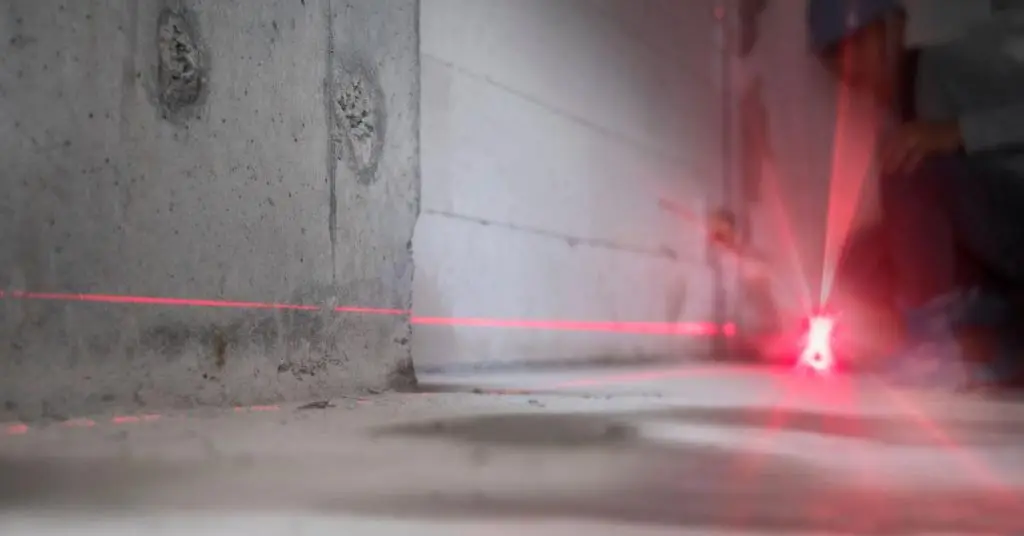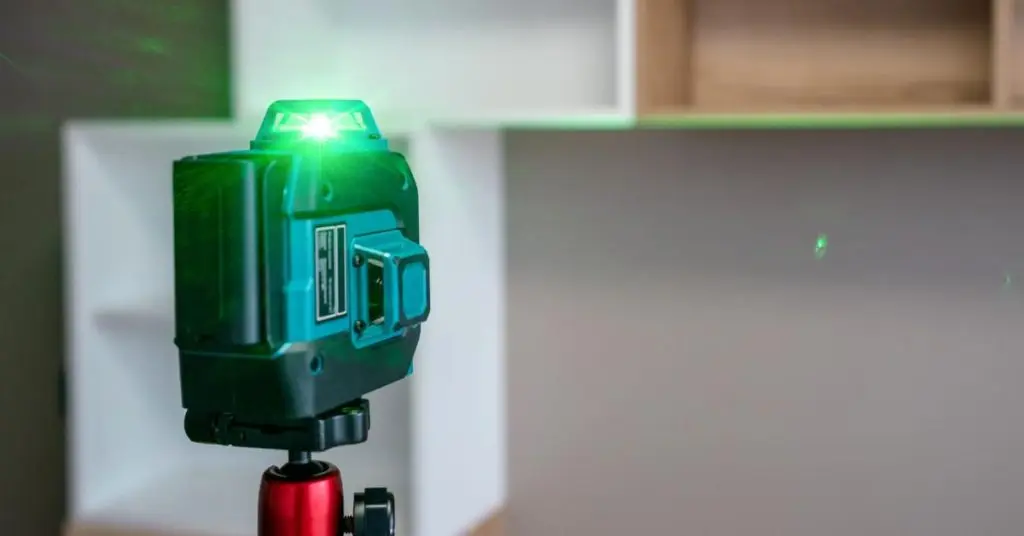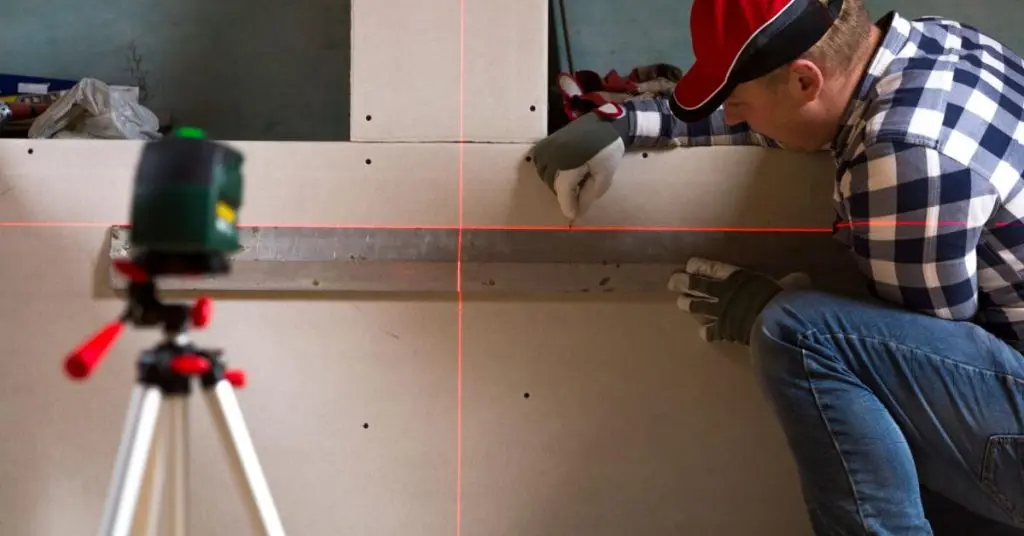If you’re looking for a new laser level, you have some choices to make. One of the most common choices you’ll have to make is between green and red laser levels. As a beginner, you might not know what the differences are between something like a VEVOR green laser level and a red one. However, this is what we’re here to help you with today. So, when it comes to green versus red lasers, what’s the difference?
Table of contents
How Laser Levels Work
The first thing you should know is how a laser level works. A laser level is a special device that shoots out a laser beam. This laser beam is meant to create a visible line on any kind of surface.
The whole point of a laser level is to allow for great accuracy for a variety of measurement and alignment jobs. At its core, there is a laser diode that shoots out light. This is directed through special optics and lenses to focus it and to form a point or straight line.
Laser levels are often manual, although they can also be self-leveling. These are very important tools in the world of construction, interior design, and carpentry. They help to make sure that all of your construction pieces are aligned, level, and plumb.
Introducing Green Laser Levels
First, we have the green laser level. These are especially useful because they’re very bright and visible. They’re ideal for outdoor use and for big indoor projects due to their visibility. Green lasers feature a wavelength of roughly 532 nanometers. This is a wavelength that the human eye can very easily detect. This means that the green laser is more visible than the red laser, and is therefore ideal for brightly lit places.
What Are Green Laser Levels Used For?
Green lasers are used for a variety of purposes, but especially in cases where visibility is important. That’s why green laser levels are usually used for outdoor construction jobs. They can also be used for big indoor spaces where you need to be precise over great distances. Because green laser level beams are so bright, you can see them even in the brightest of conditions. This helps make green lasers very accurate and it also reduces any errors from occurring.
Introducing Red Laser Levels
We then have red lasers. Red laser levels are more traditionally and widely used. The reason for this is quite simply because they are cheap and reliable. If we are talking about the wavelength, red lasers are usually around 635 nanometers. Red lasers might not be quite as bright as green lasers, but they still work well for a variety of tasks, especially for indoor use. One of the big reasons why many people choose them is due to their cost-effectiveness.

What Are Red Laser Levels Used For?
Red laser levels are usually used for indoor tasks. This could include aligning picture frames, tiles, and shelves. They work well for a variety of smaller DIY projects and construction jobs. They’re not quite as visible as green lasers, but they work well in environments that have controlled or dim lighting. If you need something that is affordable, then a red laser level might be the right one for you.
Differences Between Red and Green Laser Levels
So you can pick the right laser level for your purposes, it is important for you to know what all the differences are. The following is a detailed list of all of the differences between red and green laser levels.

Color and Wavelength
Of course, the primary difference between these two types of laser levels is the color. This also has to do with the wavelength or the light spectrum. The wavelength of red lasers is around 635 nanometers whereas green lasers are around 532 nanometers. Green lasers therefore have a shorter wavelength than red lasers. This means that green lasers are more visible to the human eye than red lasers. Green is a color that the human eye can more efficiently and easily detect.
Brightness and Visibility
Because of what we just discussed above, green lasers are much more visible in all conditions than red lasers. In fact, green lasers can be up to four times brighter than their red counterparts. Being so bright makes them ideal for situations where there is bright ambient light. This could be the case in bright indoor environments or for outdoor use. Red lasers do perform very well in situations where there isn’t much light, but they just don’t do well outdoors or over large spaces.
Accuracy
Now, the wavelength of the lasers doesn’t really make a difference in terms of overall accuracy. Both red laser levels and green laser levels can be extremely accurate. Many of them are usually accurate to within a fraction of an inch over 30 feet. With that being said, because green lasers are much easier to see, they can also be more accurate simply because we can detect them easier. The beam is easier to follow over great distances, so there is no guesswork involved.
Efficiency
An interesting note here is that green laser levels are generally much less efficient than red laser levels. Because green laser levels have complex diode technology, they also consume a whole lot of power. They may consume up to twice as much power as red laser levels, if not even more. Therefore, if you’re going for a battery powered model, it means that you’ll have to recharge or replace those batteries quite often with green lasers. Red laser levels on the other hand last much longer.
Quality of the Beam
Something else to consider when choosing between red laser levels and green laser levels is the quality of the beam. What you need to know here is that red laser levels can at times produce beams that are somewhat fuzzy. They are still effective, but there can be problems due to this. Because green lasers have a shorter wavelength and are easier to detect, and are often made with higher quality equipment, the line tends to be well-defined and clear. Therefore, the quality of the beam of green laser levels is usually a bit higher.
Applications
What it really comes down to when we are comparing red laser levels and green laser levels is the difference in applications. When it comes to large construction sites, long range visibility, and outdoor construction projects, green lasers are preferred. However, if you have a small project with controlled lighting, and you’re working indoors, then red lasers are perfectly fine too. What you need to consider here is exactly what kind of project you’re working on.
Cost
The other consideration you should keep in mind when choosing between red and green laser levels is the cost. The simple fact is that red laser levels are usually much more cost effective. Green laser levels are more expensive. This is because they have higher power requirements and use more complex tech. With that being said, although green laser levels cost more in the beginning, their increased accuracy makes them well worth the investment.
FAQs: Green vs Red Laser
Let’s quickly answer a few of your most frequently asked questions about green lasers and red lasers.
Are green or red lasers better?
Whether green or red lasers are better depends on what you need them for. Green lasers are better for outdoor use whereas red lasers are better for indoor use.
Which type of laser consumes more power?
Because green lasers are much brighter and have more complex technology, they also consume more power. They might consume up to twice as much power as red lasers.
Are red laser levels good for outdoor use?
Because of the longer wavelength of red laser levels, they are unfortunately not suitable for outdoor use. They might not be bright enough to see even over short distances.
What’s the reason for green lasers being more expensive?
Green laser levels are more expensive for two main reasons. One reason is because they are up to four times more visible, and the other is that they have much greater power requirements.
Can green laser levels cause eye damage?
Yes, green laser levels can cause eye damage, as can red ones, so never look directly into them.
Green Laser vs Red Laser: Final Thoughts
The bottom line here is that both green laser levels and red laser levels have their advantages and disadvantages. Whereas the former is ideal for outdoor use and great distances, the latter is best for shorter distances and indoor use. If you’re willing to spend a bit more money, we do recommend looking into high quality laser levels of the green variety. One of the best brands to check out as far as green laser levels are concerned is VEVOR. We have a great 360-degree self-leveling green laser level! It comes in at a reasonable price, is durable, and has some super nifty features too.





